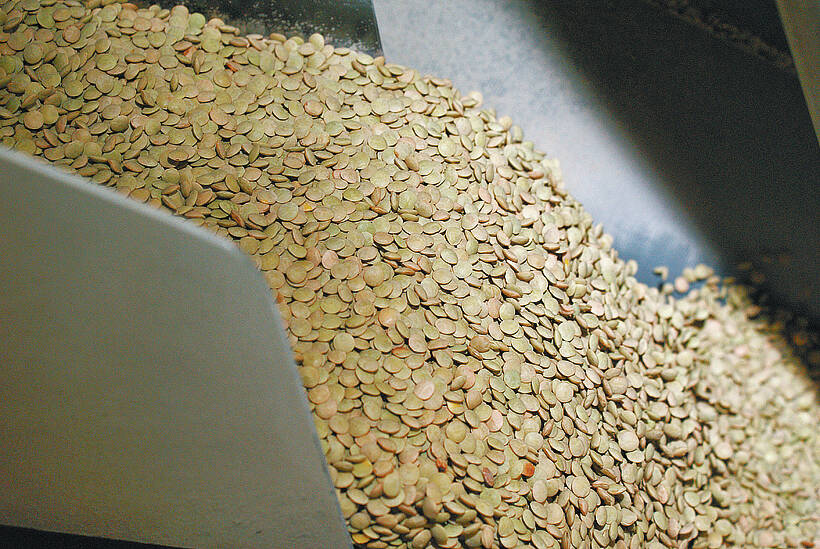GLENLEA, Man. – Lawyers like to say bad facts make bad law.
But for crop scientists, bad weather makes interesting results and valuable information.
It’s still not fun to work in, though.
“It’s freezing,” said University of Manitoba graduate plant science student Jackie Pridham, who had pulled her sweater’s hood over her head and was shivering on Aug. 19 near the test plots she is overseeing this summer.
That night, frost touched fields in other parts of the Prairies.
Pridham is studying how organic wheat grows when intercropped with other cereals, with legumes and oilseeds and with cover crops. She is also seeing how venerable wheat varieties such as Red Fife and Marquis compare to modern varieties such as AC Barrie when intercropped.
Read Also

Green lentil market oversupplied
Farmers in Western Canada can expect price pressure on their new crop of green lentils, as the available supplies among the world’s major lentil-growing nations increase significantly.
She assumed the old varieties, which some organic farmers want to sell for heritage grain breads, would be weaker than the modern varieties.
But in this first year of her experiment, the oldies have been the goodies, while the new varieties have been destroyed by cereal leaf diseases.
“I just assumed AC Barrie would do very well under disease pressure, but it’s fairly dead,” said Pridham.
“The Red Fife is still green. That was surprising.”
The problem for a crop researcher is that it is impossible to tell after one year whether this phenomenon will repeat or if it is just the product of the cold summer weather.
“I’m not sure what would happen in another year,” she said. “It’s a weird season.”
While weird, it’s a good year to demonstrate the importance of phosphorus, said Manitoba Agriculture soil specialist John Heard.
Phosphorus is important in early plant development, so crops with enough of the mineral are closer to maturity.
“Phosphorus fertilizer really paid for itself this year,” said Heard.
“The crops that were malnourished in phosphorus are the ones that are the most behind. In the race to the finish line, the ones with adequate phosphorus have the edge.”
Martin Entz, a University of Manitoba researcher, said this summer revealed an important limitation on organic fertilizer as a source of nitrogen. With normal summer temperatures, soils warm to the point that manure or green manure releases nitrogen at a rate that doesn’t promote weed growth but does promote crop growth.
But this summer soils stayed so cold that organic crops probably had trouble getting nitrogen because organic sources weren’t warm enough to break down.
“In years like this, because the soils are so cold for so long, the nitrogen out of that organic matter is very slow in coming,” said Entz.
Researchers at the U of M field have noted less fusarium and fewer grasshoppers than they expected early in the season, probably due to the cold temperatures.
They have also noted little redroot pigweed and foxtail, but more wild mustard and wild buckwheat than would be common in a normal year.
“It’s been an excellent year to see what delays crop maturity,” said Entz.
Pridham, who is from Ontario, will do more experiments next summer. She is hoping prairie people are telling her the truth when they say this has been an unusually cold summer.
“I expected it to be warmer here.”















